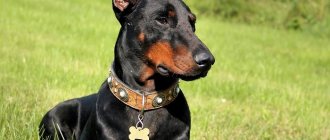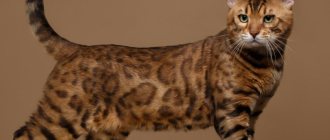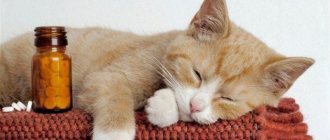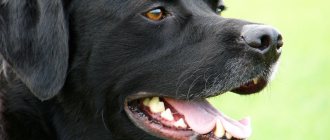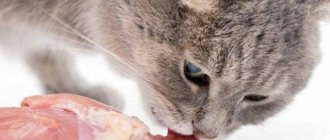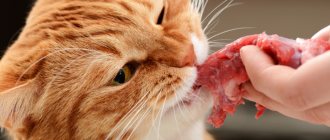General rules
To quickly gain weight, calves need the right diet. It is best to get a special journal in which you can record weight gain, as well as this or that feeding technique.
Most farmers settle on a three-time food distribution schedule at equal time intervals. And if each owner makes an independent decision about the ingredients, then he adheres to certain rules described in animal science.
From the postpartum period until the 60th day, calves are fed milk, then a supplement of wheat cereal and good quality hay is introduced. This diet promotes rapid growth and eliminates problems with the digestive system.
From 60 to 90 days, preference is given to feeds with a high protein content, which help to gain muscle mass. This includes vegetables and crushed grains. From day 120, the next additive is dried or fresh green mass in the amount of 10 - 15 kg.
This norm must be increased every day. This method of fattening bulls for meat at home leads to weight gain of up to 0.6 kg per day.
At the same time, the young animals do not starve, but they also do not receive food in quantities that can only be harmful.
The most optimal period for submitting animals to slaughter is one and a half years of age, but if we take intensive fattening as a basis, then this period will be significantly reduced.
Feeding methods and schemes
Fattening methods depend on the percentage of feed. The rule is always the same: the more money the farmer invests in the purchase of feed, the faster it will be possible to raise a bull with the highest quality indicators.
Be sure to read:
How to determine if a cow is pregnant yourself using folk remedies: rectal examination, etc.
Depending on the place of feeding, the following schemes are distinguished:
- stoic;
- pasture;
- stand-pasture.
The standing scheme is best suited for rapid weight gain , since this method involves a minimum amount of movement with the most productive feeds.
But at the same time, costs for vitamins and feed increase by 2-3 times. The substances that a grazing cow receives along with fresh grass must be taken from vitamins by a grazing cow. In addition, the grass on the pasture grows on its own, but you have to pay for feed and vitamins.
In the conditions of central Russia, the best option is a stagnant-pasture cultivation scheme. In winter, cows stand in stalls, and in summer they graze in pasture.
To gain weight quickly, it is advisable to track your walking time. The optimal time period would be 6-8 hours on pasture. The pasture itself should have vegetation of medium height. Tall grass does not contain many nutrients. There should be no garbage in the pasture. Access to clean water is required.
Fattening dairy bulls
If a farmer takes dairy bulls for fattening, then he needs to take into account the characteristics of the dairy period when feeding. Bull calves, like heifers, are fed colostrum from birth during fattening.
Concentrates begin to be administered at the end of 1 month. Grass and roughage are not given. Newborns do not develop a rumen that can process tough foods. The diet during the dairy period does not depend on the time of year.
It is necessary to observe certain points so that all parts of the stomach of calves are correctly formed, normal weight gain and accelerated growth occur. Body weight gain per day depends not only on feeding, but also on the breed of bulls.
Herefords and Aberdeen-Angus animals are capable of gaining up to 1500 g per day, individuals of the Simmental breed - 1300 g. Bulls of the Kazakh white-headed breed have a daily weight gain of 1400 g.
What diet is prescribed for calves during the milking period (description by month)?
- Colostrum is given during all 4 weeks. A bull should drink 8-10 liters per day. On day 10, colostrum is mixed with salt, no more than 5 g. The same amount of phosphate supplement is added. From day 20, in addition to colostrum, 100 g of grain mixture is given. It is better to introduce barley or oatmeal. The flour is steamed and served as porridge. The amount of phosphate fertilizer is increased to 10 g.
- At 1 week, fattening bulls continue to be given colostrum, but the diet is supplemented with 200 g of hay. There is more porridge. Steam 200 g of crushed grain. 10 g of salt and 15 g of phosphates are added to the milk. Starting from day 10, a portion of milk is divided: 4 liters of whole milk and 4 liters of skimmed milk. Hay – 300 g. Porridge is made from 500 g of grain. From the 20th day of roughage, 500 g is already given. Porridge is prepared from concentrates, 700 g.
- The bulls are transferred to reverse, 10 liters. Salts, 10 g and 20 g of phosphates are added to porridge or milk. Concentrates – 1 kg. They begin to introduce potatoes, 200 g. From the 10th day, the portion of root vegetables increases to 300 g, hay is given 900 g, concentrates 1.4 g. On the 20th day, in addition to milk, the bull receives 1 kg of roughage, 500 g of potatoes, 1.6 kg grains in the form of porridge.
- The portion of skim milk is reduced to 8 liters. The amount of hay increases to 1.2 kg. Root crops give 1.5 kg, concentrates 1.6 kg. The bull should receive 12 g of salt, 25 g of phosphates. From the 10th day they begin to introduce silage - 500 g. It is better to use corn. From day 20, the calf receives 1.5 kg of hay, 1 kg of silage and root crops. Porridge is cooked from 1.6 kg of grain.
- Fattening calves are fed with reverse water. It is given in 8 liters. Subsequently, the amount of skim milk is reduced to 4 liters. The bull gets 2 kg of roughage, 1 kg each of silage and potatoes. The mash is made from 1.8 kg of concentrates. The amount of salt and phosphates remains the same. From day 10, increase the silage supply to 1.5 kg. From the 20th day, 2 kg of plant mixture is given.
- During the first 10 days, the calf is weaned off milk. If he demands, then he is given 2 liters. He eats 2.5 kg of hay and 3 kg of silage. He is allowed 1 kg of vegetables, 2 kg of concentrates. Increase the portion of salt to 20 g, phosphates to 25 g. From the 10th day, the bull is not given milk. The amount of hay is increased to 3 kg, silage to 5 kg. From day 20, the calf eats 6 kg of canned plant food.
After the milking period, which ends in six months, a bull can weigh more than 200 kg, depending on the breed.
Milk is stopped given to calves at the end of the 5th month. A prolonged milk period will provoke improper formation of the stomach sections and obesity.
Adequate feeding accelerates the growth of young animals, but in heifers, milk affects reproductive function. They stop giving milk after 3 months. Otherwise, she may become infertile and accumulate a lot of fat.
For young animals, the combined feed KR-1 is chosen. It contains milk powder, feed yeast, meal, grass and bone meal, chalk, PKR-1 premix.
Compound feed is added along with the grain mixture. Silage can be replaced with haylage. In summer, silage is replaced with green grass. They do not give concentrates. A portion of hay is left.
In six months, a calf can eat up to 20 kg of grass. When breeding young animals as a business, it is necessary to take into account all the subtleties of the dairy period.
How to choose calves for fattening
The selection of bulls for fattening is carried out several months after birth, since weight gain should begin as early as possible. When choosing animals, you need to carefully examine the limbs and neck of the individual.
The calf, if it is healthy, stands firmly on its feet, twisting its neck, trying to find its mother. He is always looking for his portion of milk. From this behavior you can understand that the animal’s neck and bones are strong.
When purchasing a bull for fattening purposes, it is better to make the purchase in March or April. During these months, calves born in winter or late autumn are put up for sale. Such animals are characterized by strong immunity; they can more easily tolerate diseases and confinement.
If possible, it is recommended to purchase bulls of certain breeds. Such an animal can be purchased from a livestock farm, the owner of which breeds specific breeds of cattle.
Although this is not always convenient, such a purchase has some advantages: the breeder will provide a passport of the individual to confirm its origin and the advantages of the breed. Otherwise, there is a risk of purchasing a low-quality bull.
How to feed from 6 to 10 months?
Rapid fattening of bulls for meat promotes increased muscle mass building. After 6 months, the young animals are transferred to one of the types of feeding. The farmer decides independently which scheme to choose.
It all depends on the availability of food supply, whether it is beneficial for him to use one or another technique. They use haylage, silage-haylage and combined types of feeding.
The diet is designed for a daily increase in body weight of 750-800 g.
For haylage feeding, the following diet is used:
- 1.3 sen;
- 8 kg of haylage;
- 2 kg of concentrates;
- salt – 30 g;
- phosphates – 40 g.
Fattening bulls at home gain up to 100 kg. If genetically the calf can build up more muscle mass, then the portion of feed is increased.
With a daily intake of 1500 g, 15 kg of haylage, no more than 3 kg of concentrates, and 2 kg of hay are given. Increase the amount of salt to 50 g, phosphates to 60 g. When breeding bulls as a business, they acquire livestock of Herefords, Simmentals, and Shorthorns.
With the silage-haylage method, the bull gains a weight of 800 g daily.
To quickly fatten bulls for meat, the following diet is prescribed:
- 2 kg of hay;
- 10 kg silage;
- 4 kg of haylage;
- 2 kg of concentrates;
- the amount of salt and phosphates remains at the same level.
In order for the bull to use all the resources of his body and gain weight up to 1.5 kg, he must receive more feed: roughage - 2.5 kg, silage up to 14 kg, haylage - 6 kg.
The effectiveness of feed use is observed in the Limousin, Red-and-White, Podolsk, and Bestuzhev cattle breeds. This must be taken into account if using bulls as a business.
Combined feeding involves the use of hay, silage and root crops. Potatoes, fodder beets, and turnips are given as root crops. Some are replaced with melons: pumpkin, zucchini.
You can add carrots and sugar beets to the diet for fattening bulls at home.
| № | Helpful information |
| 1 | 5 kg of hay; the portion is increased compared to other feeding schemes; roughage will not cause pathologies in the gastrointestinal tract |
| 2 | 8 kg silage |
| 3 | 5 kg – potatoes or other vegetables |
| 4 | 3 kg concentrates |
| 5 | the portion of mineral supplements remains at the same level |
In summer, it is better to walk bulls on pasture. This will save the farmer money if he, as a business, raises calves for meat. In this case, up to 7 kg of hay is given.
Silage and vegetables are excluded from the diet. Concentrates remain in the same quantity. Pasture is selected with medium vegetation. Walking time – no more than 6 hours.
If a bull weighed 200 kg at six months, then by 10 months he can gain weight of 300-380 kg. Using such diets, you can achieve good results. At the same time, the conditions of detention will not affect the health of the calf.
Grain feeding is often used. To ensure that the concentrates are better absorbed by the body, calves are given probiotics: “Lactobifadol”, “Olin”, “Monosporin”.
Meat sales and customer search
There are many options for selling veal; first, you should search the Internet, go shopping and find out from friends the price of veal. After this, the person will already know at what price he can sell. For example, a restaurant will buy meat at a higher price than at the market, but they will check the meat at the veterinary office for the presence of diseases and other pathologies.
You can also negotiate with the store and systematically supply veal there, or you can go to the market yourself and sell meat. It would be good to find a certain point to be sure that all the meat will be sold and the money will be in hand for all the products at once.
The business of selling meat is of course profitable, but it has a lot of competition, so a person’s task is to find an innovative approach, unusual ideas and, most importantly, to monitor the freshness of the meat
It is important not to inflate the price, this way you will have more customers than your competitors. You need to know that during the fasting period the purchase of meat products decreases
If you decide to sell veal yourself, then you need to choose a place where there are no meat shops or stalls nearby. Sleeping areas are good for this if there is no butcher shop nearby. A place near the metro or near bus stops, where there is a constant flow of people, is also good.
How to fatten bulls up to 16 months?
From 10 to 16 months the growing period begins. For feeding, the same methods are retained, but the amount of feed is increased. If a calf weighs 380 kg, then, depending on the feeding scheme, he is prescribed the following diet:
- haylage type: 2 kg of hay, 10 kg of haylage, 2 kg of concentrates, 50 g of phosphates and 40 of salt;
- silage-haylage type: 2 kg of hay, 14 kg of silage, 5 kg of haylage, 2 kg of concentrates; the amount of mineral supplements is left;
- combined method: 3 kg of hay, 5 kg of haylage, 10 kg of silage; 6 kg of root vegetables; concentrates, salts and phosphates does not change.
Usually the farmsteaders look at the appetite of the bulls. If the food in the feeders quickly disappears, this indicates that the animal is not getting enough to eat. This should not be allowed. If animals quickly ingest vegetables or silage, gastric stagnation or rumen overfilling may occur.
The feed simply will not be fully digested in the rumen and pass into the net. When the rumen and mesh are blocked in animals, food does not regurgitate into the oral cavity. The chewing gum disappears. This is a warning sign. Veterinarian assistance is needed.
The appetite of bulls should be controlled. They shouldn't go hungry. The portion is increased if the feeders quickly become empty. During the fattening period, young animals gain 700-800 g daily. If the cattle breed is early maturing, but at 16 months fattening bulls can weigh up to 500 kg.
Carrying out intensive complementary feeding
The period from 1.5 years of age until slaughter is called intensive complementary feeding. Most often, animals are sent for slaughter at 20 months of age. This period is enough for the bull to gain as much meat as possible. Subsequent fattening leads to deterioration in the quality of beef.
With intensive complementary feeding, 30% of the weight of the products obtained at slaughter occurs.
At this time, the individual should be fed:
- Silage in the amount of 40-45 kg per day. When grazing, the animal should be driven into the barn before 16:00-17:00 and about 20-25 kg of silage should be poured into the feeder.
- Hay in a volume of 7 kg.
- Root vegetables (beets, potatoes, carrots) in the amount of 1.5-2 kg.
- Additives: 90 grams of salt and phosphates with the addition of chalk – 50 grams, mixing them into food beforehand.
Intensive fattening of bulls
This is the last stage of feeding young animals that are bred for meat. The intensive fattening period lasts 3 months. During this time, the bull gains 30% weight.
A steer weighing 500 kg can weigh 750-780 kg. Animals with high productivity can gain weight up to 800 kg. For fattening, many schemes are used: stillage, silage, bagasse, beets, haylage.
They are all effective. Whatever method is chosen, it is not recommended to use it for more than 3 months.
If the farm is located near a winemaking enterprise, it is recommended to keep the bulls on stillage. This is waste from the company. You don't have to worry about silage and vegetables.
The feeding ration will be as follows:
- 40-45 kg stillage;
- 6 kg of corn cobs;
- 6 kg of hay;
- 1.2 kg of sugar beets;
- 100 g phosphate, 90 g salt;
- 50 g chalk.
If in the village there is an enterprise for the production of sugar from sugar beets, then it will be cheaper to organize fattening of bulls on beet pulp.
The diet provides for the following diet (by month):
- 45 kg of pulp, 3 kg of straw, 1.4 kg of concentrates, salt 30 g, sulfates 60 g;
- 40 kg of pulp, 3 kg of straw, 1.8 kg of concentrates, the portion of salt is increased to 40 g, the amount of sulfates remains the same;
- 40 kg of pulp, 1 kg of hay, 2 kg of straw, 2.9 kg of concentrates, salt 45 g.
The cheapest way to fatten is on hay. The diet includes a large amount of concentrates, salt and chalk. No succulent food is provided. The containment technique can only be used for a limited period of time.
Diet by month:
- 10 kg of meadow hay, 3.2 kg of concentrates, 30 g of salt, 10 g of chalk;
- 10 kg of hay, 4.2 kg of concentrates, 30 g of salt, 15 g of chalk;
- 8 kg of hay, 6 kg of concentrates, 30 g of chalk, 40 g of salt.
During the fattening period, young animals rapidly gain weight. There is a lot of stress on the limbs. Some cattle breeds, which have a thin bone structure, experience fractures. It is necessary to introduce mineral supplements or chalk into the diet for any diet.
When breeding bulls for meat, it is necessary to provide for all fattening periods. From birth to slaughter it takes 19-20 months.
If a calf is bought at six months of age in the spring, then after a year the fattened bull can be taken to slaughter.
More intensive feeding techniques can contribute to accelerated weight gain, but there is no guarantee that the bull will remain healthy, the meat will be lean, juicy and tasty.
Using Supplements to Accelerate Gain
The use of specially developed feed additives helps to increase the weight of calves. Various supplements have a positive effect on increasing the body weight of bulls; for this reason, they are often used for fattening animals by owners of small livestock farms. Using such products in accordance with regulations allows you to achieve the desired results.
Fattening bulls for meat involves the use of the following additives:
- Premixes. Of these products, the additive “Superpremix” should be highlighted, which is often used by livestock breeders. Such products are suitable for use not only for large livestock farms, but also for small farms. The main requirement is to follow the instructions exactly. The components of the premixes include a growth stimulator, flavoring, vitamins and minerals. If you regularly add this fertilizer, the fattening period can be reduced by 42 days, as well as feed consumption can be reduced. Moreover, these products do not have a negative effect on the animal’s body.
- Antibiotics. They can also be added to feed to increase the weight of bulls. Adding antibiotics to an animal's food for a month can increase its weight by 5%. It is recommended to mix antibiotics into the feed, since the effect worsens with muscular and oral administration. When fattening, it is recommended to give preference to Penicillin or Streptomycin.
It should be noted that calves fattened for meat must be castrated. Thanks to this procedure, the beef becomes more tender and fatty, less tough compared to bulls that were not castrated.
- Prebiotics. Such additives help increase weight during the fattening period, and also improve immunity in bulls. You can start giving prebiotics on the 4th day after the calf is born. Until 3 weeks of age, they should be added to milk, and then mixed into food. The most popular product from this group is the Prestarter supplement. The basic rule is that if prebiotics are used during fattening, the animal should always have clean, fresh water available.
- Biostimulants. Thanks to such supplements, it is possible to increase weight gain by 15% every day. They can be introduced into the diet from 6 months of age. But this product is not suitable for milking animals. Of the products in this group, the most popular is Krezacin. This additive must be mixed with water or food before serving until completely dissolved. Before you start using biostimulants, you need to carefully read the instructions and calculate the dosage.
- Cereal additives. This is an effective supplement for fattening calves. The use of cereals and legumes allows the bulls to grow faster, and the beef will ultimately be tender. Young animals happily consume grains and beans, so this method can be implemented without difficulty. Although such fattening is quite expensive.
Types of fattening
Use of grain fodder
If you use special additives, then fattening bulls for meat at home is carried out several times faster.
The most accessible products include Lactobifadol, which is added to feed throughout the life of the animal until slaughter. As for the time of food distribution, it is different for each household.
Good weight gains are obtained by using crushed grain fodder, with a daily increase in its quantity.
| Age group | Quantity of feed |
| 60 – 90 days | No more than 0.6 kg per day |
| 180 days | 3.5 kg every day |
| 365 days | 9 kg daily |
| 425 days | 10 -14 kg daily |
The proposed scheme allows you to gain up to 500 kg by the age of one year. Feed according to the latest norm is given before slaughter. They use either grain mixtures, for example wheat and barley in a 1:1 ratio, or one type of grain.
In the latter case, the weight gain may be slightly less. The advantage of this type of feeding is efficiency and economic benefits.
Using pulp
This technology allows you to achieve daily weight gain from 800 to 1000 grams.
The amount of feed is given in kilograms, with the exception of salt and phosphates, their amount is in grams.
Silo use
With this type of fattening, the average daily weight gain is 950 – 1000 grams.
The amount of feed is given in kilograms, with the exception of salt and phosphates, their amount is in grams.
If none of the listed options is suitable, and preference is given to those products that are at hand, you can try the following technology.
Here an individual approach is carried out based on the conditions of detention and food supply:
- distribution of special preparations to drinking bowls;
- fresh succulent food;
- green mass with hay or straw during the transition period, transfer to grass.
From the age of six months, you can give food scraps from a person’s table, again initially in small quantities, gradually increasing it. This is the method that most private farmers choose because of its benefits.
For example, potatoes should be given boiled and mashed. The young animals are gradually accustomed to the type of feed available on the farm, and if the event is successful, then no problems should arise with fattening the calves for meat products.
Allows only adjustments to diets, but not their complete change, and therefore even a beginner can raise calves on a home farm.
The main thing here is setting the right task and putting effort into its implementation, and in this case it will be possible to achieve the desired result without much effort.
Animals are kept in an intensive way to obtain products in the shortest possible time, but without harming the livestock.
Types of feeding
It is possible to establish a good business related to the sale of beef only by quickly fattening the young animals. To quickly fatten bulls, they use different methods, which involve introducing different feeds into the diet.
Grain fodder
The use of crushed grain fodder allows achieving good daily weight gain in young cattle. Naturally, it is necessary in this situation to use high-quality products. For accelerated fattening, wheat in combination with barley in different proportions or one grain crop is suitable. But calves need to be given more than just grain. They should also be fed hay, grass and root vegetables. Moreover, the serving size depends on the age category of the animal.
Thanks to such a feeding program, by the age of one year you can achieve a weight gain of approximately 500 kg. Moreover, the use of grain fodder during fattening allows you to gain muscle mass with a small amount of fat, which has a good effect on profits. The advantage of this diet is its cost-effectiveness combined with high efficiency.
Zhom
Thanks to the use of pulp in the fattening process of bulls, a daily weight gain of up to 1 kilogram can be achieved. The use of such a product when feeding requires large financial costs, but it is worth it.
When using this method, it is necessary to accurately calculate the volume of pulp to be fed. It is worth considering that feeding such products in excessive quantities makes the beef watery.
Silage
The use of silage when fattening young cattle allows for a daily gain of within 1 kg.
The amount of feed fed in any case depends on the age of the animal. A farmer breeding bulls for meat will only have to decide on the choice of one of the proposed schemes and use it. If necessary, you can adjust the diet to save or increase the nutritional value of feed, its quality and benefits.
Feed additives
Premixes developed by specialists have a significant positive effect on fattening animals and gaining muscle mass. This is exactly what the “Superpremix” additive belongs to.
They give it at the rate of 150 grams per animal. As for the exact quantity, here you need to know the weight, age group of the calves and look at the detailed instructions provided with the drug.
The additive is suitable for both large livestock complexes and home farms. It contains mineral and vitamin supplements, a stimulant that affects growth, as well as a fragrance that promotes better feed consumption.
With regular use, animals experience a good gain of muscle mass, and at the same time, the fattening period itself is reduced by 42 days.
In addition, less feed is consumed, which is very beneficial for the farm owner. And if under normal conditions approximately a ton of feed is consumed per bull, then in this case it is reduced to 800 kg.
“Superpremix” does not contain harmful substances that have a negative impact on the health of young animals. To obtain marbled meat, the additive is fed before slaughter.
Profitability of raising bulls
To calculate the profit from breeding bulls, we first estimate the costs of organizing a business. The following investments lie ahead:
- Purchase of 10 calves – 100,000 rubles.
- Arrangement of paddocks and pastures - from 50,000 rubles.
- Purchase of feed for 6 months in advance - from 50,000 rubles.
- Purchase of a spacious freezer and equipment - from 80,000 rubles.
It turns out that you will spend at least 280,000 rubles on organizing a small farm. Compared to some other areas, it’s not such a big expense. On average, it costs 10,000-15,000 rubles/year per animal to feed bulls
It is important to consider other variable costs:
- payment of wages to 2-3 workers - 40,000 rubles/month.
- regular calls to veterinarians - from 20,000 rubles/month.
- plot rental – from 10,000 rubles/month.
Variable costs will be lower if you start running a business on your own country plot. The benefits will be noticeable no sooner than a year later. During this time, the animals will have time to gain weight for slaughter. Depending on the specific breed of bull and the quality of its fattening, you will have at least 250 kg of meat. By selling meat at a wholesale price of 150 rubles/kg, you get up to 38,000 rubles. And this is only 1 bull. Having sold the meat of all 10 animals that you bought, the proceeds will be up to 380,000 rubles. Thus, you reach the break-even point within a year! Spend the net profit again on purchasing livestock for further cultivation.
It will be difficult to determine the most effective fattening of bulls - many farmers follow their own path of development. It will be useful to visit several operating farms to gain experience and learn from entrepreneurs how they do business. But this direction, as practice shows, very rarely does not pay for itself. After only 3-5 years, you can achieve good success by developing your farm and looking for new sales channels.
Antibiotics
It is possible to gain a lot of weight in animals during fattening with the use of antibiotics. If they are used for 30 days, the weight increases to 5%.
After 90 days, this percentage reaches 15 and the effectiveness remains for 6 months, then the indicator decreases. By one year of age the difference will be only 8%.
There is no clear agreement among specialists on the methods of administering antibiotics. Experiments have shown that intramuscular injections and oral administration give less effect than mixing drugs with feed.
When using injections, you need to know that they are given twice a day. To influence the growth rate, you can use “streptomycin” or “penicillin”.
With correct calculation, the young animals begin to rapidly increase in size, their appetite increases, and hay feeding can be started from the fifth month.
Proper care of meat breeds
So, we have already figured out what and how to feed fattening bulls, but good and regular food is only half the success. The other half is creating optimal housing conditions and ensuring the calves are properly cared for
Particular attention should be paid to the room in which the bulls are located, because their stall must be dry. To do this, it is necessary to remove the top contaminated layer every day, and completely replace the litter once a month.
Proper care of bulls at home will save them from diseases and allow them to quickly gain weight, because no feeding technology can work properly in dirty barns. Manure removal should be done three times a day, after each feeding of calves. If you do not have the opportunity to perform the procedure so often, then try to clean the stalls well at least at night.
Bulls should eat food every 8 hours, and the daily intake of certain products can be easily calculated by a veterinarian, based on the breed of the calf and the initial data. Do not neglect the advice of a doctor, because animals must receive the optimal amount of food without overeating or starving. A good menu is the basis for rapid weight gain, without illness or obesity.
Did you know? Some experienced farmers recommend using grain feed as an ideal feed, which will save you money and reduce the cost of meat.
Unlike cows, young bulls are best kept in pens, and some individuals, due to their difficult nature, are tied to the stall with chains or ropes.
Only in this way can it be possible to limit the movement of aggressive animals and avoid their clashes with other residents of the farmstead. Moreover, restricting movement allows you to gain weight faster, which cannot be said about the pasture method of keeping. However, in order for the calf to maintain a good appetite, it must be taken out into the fresh air every day, and after a walk it is offered swill and hay.
There are several simple rules that any novice farmer who decides to start raising calves for meat must adhere to.
These include:
- mandatory examination of calves by a veterinarian before purchase;
- performing all vaccinations according to the age of the animals;
- training to walk from the first months of life (but only after the dew has disappeared);
- keeping in the shade in hot weather;
- compliance with sanitary standards in the pens (the floor must always be clean and dry);
- organizing regular walking of young animals, since otherwise the bulls will be aggressive and sickly;
- compliance with the temperature regime in the stall (room temperature should not fall below +10 °C);
- stopping walking bulls during puberty, as at this time they become very aggressive and can injure their fellow tribesmen.
Only by taking into account all these nuances will you be able to achieve the most effective results when fattening bulls that will provide the desired income.
Prebiotics
“Perestarter” contains good recommendations, containing mineral and vitamin supplements, as well as a cellulose prebiotic. Affects growth rate, improves immunity, promotes good functioning of the digestive system, and develops the proventriculus.
Prebiotics begin to be given at four days of age. At first, up to 21 days, the drug is mixed with milk and given to young animals.
With the accelerated cultivation option, the use of “Restarter” is recommended for the entire period according to the instructions, so you can get the desired result.
Breed characteristics also influence fattening; some bulls can weigh about 600 kg by the end of the period. Feed is distributed 4 times a day. The main rule is that when adding Prestarter, animals must be provided with access to water.
Features of fattening a heifer for meat
Raising bulls at home is not so easy for a novice entrepreneur. He must have a certain theoretical basis that will help him choose the right feed for livestock, as well as create favorable conditions for housing and treatment. In the process of raising calves for meat, it is customary to distinguish three main stages:
- Preparatory. Its main purpose is to provide the young with a significant amount of food. Given their picky eating habits, calves should have silage, hay and straw in their diet.
- Main period. At this stage you have to solve the same problems as at the first.
- The final stage. Calves already have less need for food, so their diet has to be adjusted by adding a lot of concentrates and succulent feed.
Significant weight gain can be achieved if an optimal feeding schedule is drawn up for the calves: they need to be fed three times a day at equal intervals. Before feeding the calves, it must be prepared in a certain way: grain crops must be crushed or steamed, potatoes must be boiled and mashed, root vegetables must be peeled and washed. For better digestion, the young grass must first be dried; it is added to the diet in small portions, gradually increasing the amount.
The presence of feed in the diet of calves that exceeds their physiological needs has a positive effect on muscle development, weight gain, and meat quality.
Calves that have been given insufficient feed for a short time begin to grow actively in the first weeks after being switched to a normal diet. If throughout the season the young animals do not receive enough food, this will lead to developmental delays.
A great help for the farmer is the presence of nearby processing plants - a sugar factory, a brewery or a distillery. From them you can get food waste from production, which can be given to bulls as early as six months of age.
When raising calves for meat, special attention must be paid to the quality and quantity of feed. If we take into account these and other rearing recommendations, one-year-old calves can gain 7 times more weight than at birth, and upon reaching the age of 1.5 years they can experience at least a tenfold gain
Biostimulants
Today, many livestock owners use Krezacin, which has a significant impact on fattening periods by increasing appetite. If you use such a drug, you can achieve daily weight gain of about 15%.
It is important to know! The use of "Krezacin" is permitted only from six months of age.
"Krezatsin" refers to harmless drugs that do not accumulate in the body. It can be added both to feed and drinking water, where it will completely dissolve. Calculation of the dosage for 1 kg of mass is no more than 0.010 g of biostimulant.
Feeding ration for bulls
The diet and feeding standards for bulls depend on the age of the animals. You need to start with milk (colostrum). New food can be introduced only when calves reach a certain age and their stomach is ready to digest roughage.
Up to six months
In the first minutes after birth, calves should receive colostrum containing huge amounts of antibodies. Bulls are born with a weak immune system. It is colostrum that allows you to get immune protection from dangerous diseases and improve the functioning of your stomach. You can feed bulls using a bottle with a nipple. Large farms practice feeding calves colostrum from different cows. This combined product is healthier because it contains more antibodies.
See also
Types of feed for cattle and nutritional value, diet compositionRead
The rate of milk consumption is increasing every day. Initially, calves drink half a liter at a time. By the end of 2 weeks, this figure increases 4 times. A one-month-old bull drinks 1-2 liters of milk per feeding. In total, he is fed three times a day. If there is no natural milk, calves can be given a substitute or skim milk (skimmed milk) in the same volume.
In addition to milk, the bulls are given fresh water (from 1 liter to half a bucket). From the second month of life, for quick fattening, small quantities of oatmeal, mixed feed, and grain begin to be introduced into the diet. Accustoming animals begins with 100 grams of new food. Then the rate of concentrated feed is increased to 1.3 kg (at 3 months) and 1.9 kg (at 6 months) per day.
Expert opinion
Zarechny Maxim Valerievich
Agronomist with 12 years of experience. Our best country expert.
Ask a Question
Fodder beets (grated) begin to be fed to animals from the age of one month. At the very beginning, the bulls are given 200 grams of vegetables per day. By 6 months this figure is 3 kg per day. A salted lick stone should be freely available.
In the process of raising and fattening bulls (starting from 4 months), special attention is paid to grazing them on pasture. Fresh air and lush grass improve the well-being of calves, promote good appetite and rapid weight gain. You can fatten bulls within the calf barn, that is, keep them in stalls. The main thing is that animals receive the full range of feeds needed for faster weight gain.
The most useful vegetation is legume-cereal hay. At first (at 2 months), calves eat 0.5-1 kg per day, with each week the consumption rates increase. Gradually the animals are transferred to grass. First, they give dried, and later - juicy legumes and cereals. It is recommended to graze young bulls on young grass 10-15 cm high. At 3 months, calves eat 3-4 kg, at 6 months - 15-18 kg of grass per day.
After six months
When calves are 6 months old, they can eat the same food as adult animals. The main food for quick fattening bulls remains grass in summer and hay in winter. The diet should contain vegetables, grain mixtures, mixed feed, vitamin and mineral complexes, chalk and salt.
A goby eats from 20 to 30 kg of grass per day. Grain mixture or mixed feed is given 2-3 kg or more. The norm of grass for an adult cattle is almost 55 kg. In winter, starting from 6 months of age, a calf eats 5-20 kg of hay and 5-15 kg of silage per day. Animals gain weight well if root vegetables are present in the diet (3-7 kg per day). The calf drinks 1-2 buckets of water at a time.
Cereal supplements
The use of cereal and legume diets is the way to rapid weight gain in bulls. Animals raised on this feed produce soft, tender meat products, eating green mass containing fiber and vitamins.
The diet is aimed at intensive rearing, and young animals gain weight well.
For a home farm, it is important to pay attention not only to the quality of the feed, but also to the distribution location. The premises where animals are kept must be clean so that pathogenic microorganisms cannot cause a particular disease.
You shouldn’t think that all the care of cattle consists of distributing feed and turning the livestock out to pasture; here you need to put in a lot of work to get good meat products. The above recommendations apply to all breeds of cows: Simmental, Holstein and others.
Features of the diet and how much food does the animal need per day?
Features of the diet depend on the feeding scheme and breed. If we are talking about purebred bulls, the selection of which was aimed at breeding individuals with the fastest possible weight gain, then the amount of feed per day can reach up to 100 kg. But this only applies to rare and expensive breeds.
The average one-year-old bull consumes 9-10 kg of feed per day
The average one-year-old bull consumes 9-10 kg of feed per day.
The diet should include:
- hay or silage;
- concentrates or compound feeds;
- vitamins dissolved in water or mixed into food;
- roots.
It will not be possible to feed a meaty bull with silage and feed alone. More than 30% of the resulting carcass will be fat. Alternating types of food, short walks and constant availability of clean water are the key to proper fattening.
What to feed bulls: table
The optimal daily intake of products for calves is given in the table:
| Calf age, in months | Grass, hay, kg | Vegetables, kg | Grain, kg |
| 2-5 | 5 | 7 | 0,6 |
| 5-9 | 6 | 8 | 3,5 |
| 10-14 | 7 | 10 | 8 |
| 15-18 | 8 | 13 | 14 |
Important! It is necessary to ensure that the young animals do not overeat fresh, juicy grass. This can lead to stagnation in the stomach, which subsequently leads to poisoning.
Is this business profitable?
Of course, you won’t get rich from day one; in order to make a good profit, you should invest in business. If there is a private sector where you can build a barn, that’s good, otherwise you will have to buy a small plot and build a room for bulls.
Next you should carry out the following manipulations:
| Tasks | Expenses |
| Set up a barn | Feeders, drinkers, cover. |
| Purchase young bulls or calves | The cost of one bull ranges from 5 thousand to 20 thousand rubles, it all depends on the breed. For 10 heads of calves it will cost approximately 100,000 rubles. |
| Buy food for the first time | The cost will be about 50 thousand rubles for 6 months in advance. |
| Set up a pen and stalls | 50,000 rubles |
| Purchase of necessary equipment | 80,000 rubles |
In total, it will come out to approximately 280,000 thousand rubles, perhaps more, and perhaps less. Let’s also calculate the time spent:
| Expenses | Sum |
| Salaries for hired workers 2-3 | 40,000 rubles for 30 days |
| Periodic calls to veterinarians | 20,000 rubles for 30 days |
| Rent a plot | 10,000 rubles for 30 days |
Bull calves can be taken to slaughter when their live weight is approximately 500-600 kg; the animal reaches this weight by 20 months. It is at this age that bulls reach the desired live weight. The meat yield per animal ranges from 60 to 70%.
For example, a bull weighs 450 kg (not very large), and will produce 270 kg of meat. A kilogram of veal costs an average of 300 rubles. It turns out that from one small bull you will get 81 thousand rubles. If you multiply this figure by the number of livestock, you will get a very impressive amount for meat pulp. You can also implement other parts of the body:
- head;
- hooves;
- internal organs;
- tail.
This will still bring a small profit. Thus, the business will fully pay off within a year. And after 3 years the business will take off. If meat is supplied to large outlets, registration of activities and passing quality control of meat products will be required.
The video below talks about feeding bulls at home and the costs that will be required to fatten bulls for meat:
Purchase of calves
First you need to decide for what purpose the bulls will be bred; there can be many options:
- for myself;
- for ongoing implementation;
- for supply to cafes and restaurants;
- spreading among friends.
Once the goal has been determined, it is worthwhile to start purchasing calves. It would be best to contact a special agriculture facility that specializes in raising bulls. Among the best meat breeds of bulls, the following breeds are noted:
- Russian Komolaya;
- Devonian;
- Shorthorn;
- Galloway;
- Aberdeen Angus.
When purchasing calves, pay attention to their body weight and whether it corresponds to the expected weight. The general condition of the animal and the presence of disease, the productivity of the parents. It is best to buy bulls whose weight varies within 100 kg.
You can save on purchases by purchasing a dairy calf, which must be fed with cow's milk until it is three months old.
The best time to buy calves is in late spring, so you can get a cash reward in the fall.
This video explains how to choose bull calves, how to keep them and whether it is profitable to breed them for meat:
Advantages and disadvantages of breeding bulls at home
This type of farming activity has its advantages and disadvantages. The positive points include:
- a significant number of options for selling finished products: friends, acquaintances, cafes, restaurants, shops;
- small financial investments at the first stage of cultivation, especially if there is already an equipped place for keeping young animals;
- the ability to independently control the growth and development of bulls;
- all costs quickly pay off, you can also make a good profit and provide your family with high-quality meat products for a long period of time.
As for the disadvantages of raising bulls on your own, you will need to attract outside labor. With a large number of young animals, 1 person cannot cope. You also need to consider the high competition at the farmers market, but there is always a demand for meat.
Raising beef bulls as a business is gaining momentum among modern farmers. This is quite a profitable business. But to obtain high-quality meat, you must follow the rules of feeding and care.
Nutrition of young animals
Few farmers, especially those who are just starting to breed cattle, know how to feed young bulls from one year old, how much food they should receive and what feeding method to use in order to quickly increase their weight.
Approximate composition of daily feeding:
- three kilograms of hay;
- four kilograms of root vegetables;
- one and a half kilograms of concentrated additives.
In summer, the main food of young bulls is pasture, and in winter, to quickly fatten growing animals, they use hay, fodder root crops and compound feed. Food can be varied with oil cake and flax. Some farm managers fed one-year-old calves with boiled and chopped potatoes, as well as food waste.
A big advantage for the farm will be its location close to processing plants. At bakeries, distilleries and other industries, you can get good complementary food for cattle. If you know how to fatten livestock for meat purposes, determine the appropriate method and correctly draw up nutritional plans, then by the age of one and a half years the young animals increase their weight tenfold.

